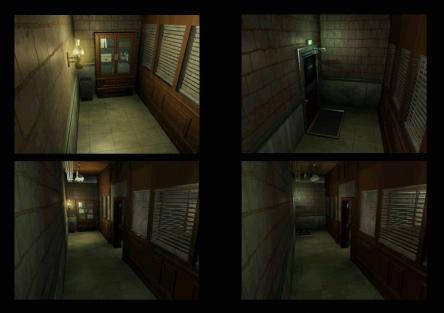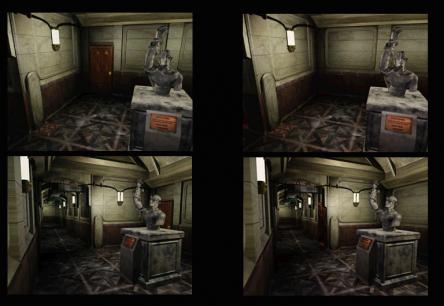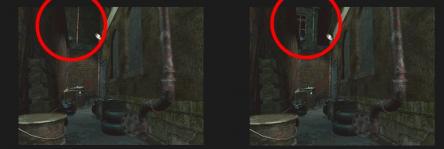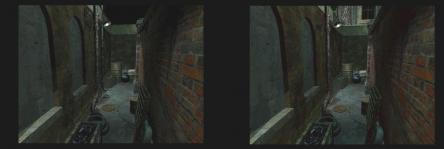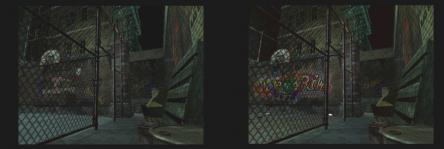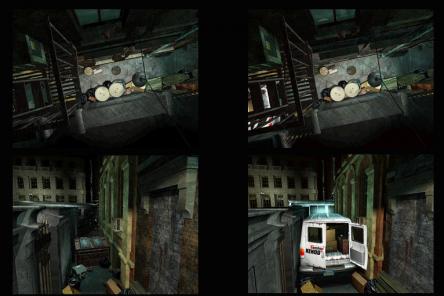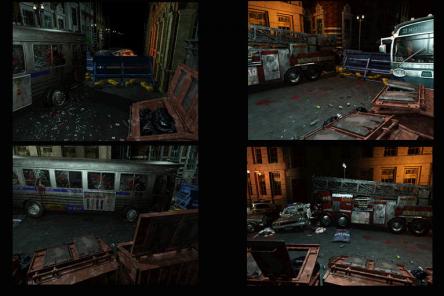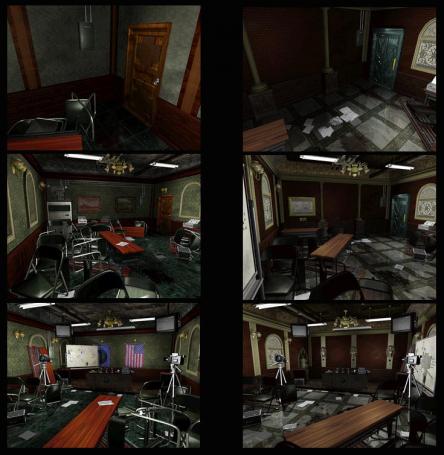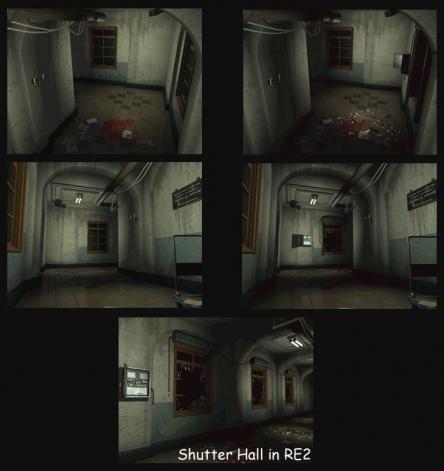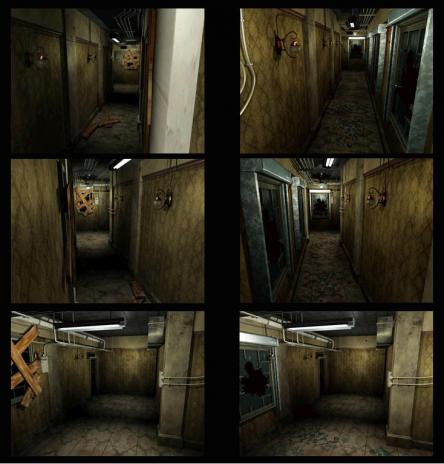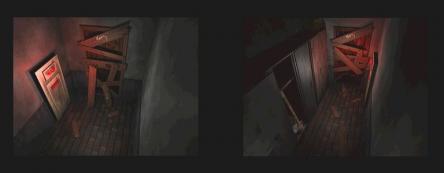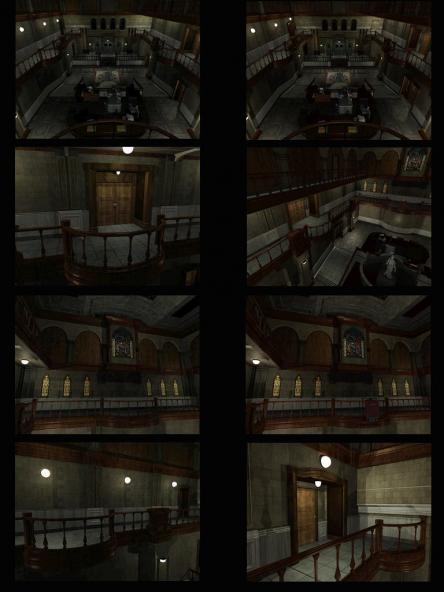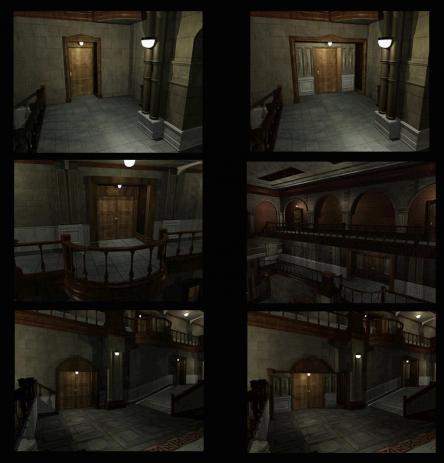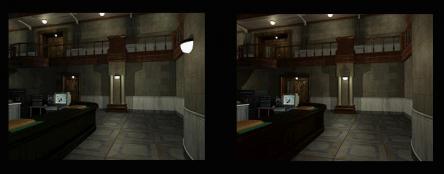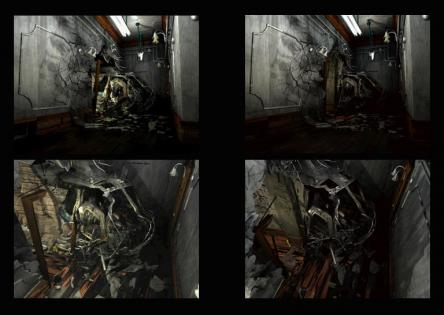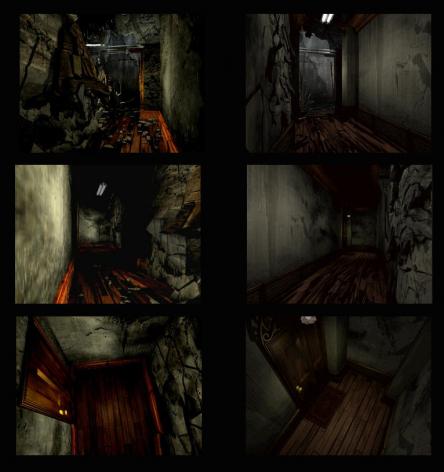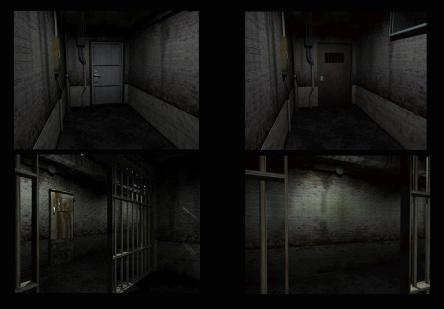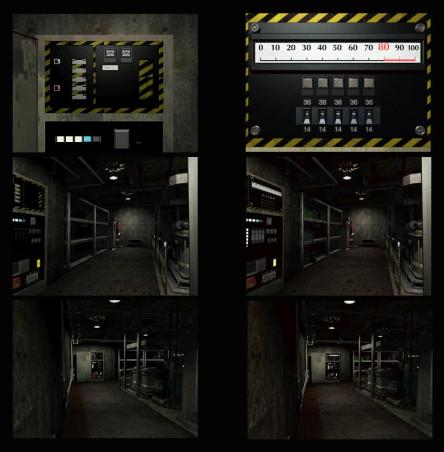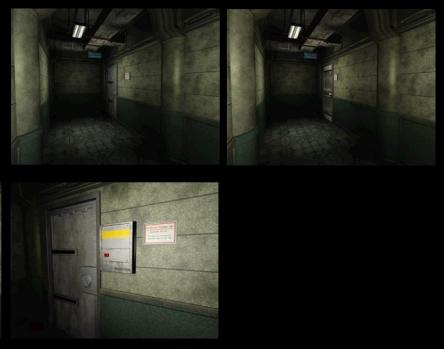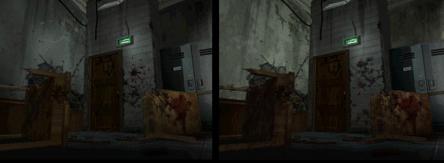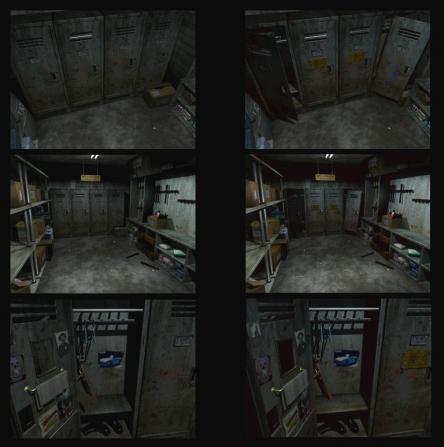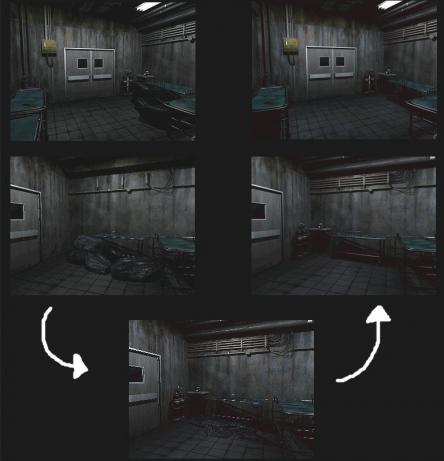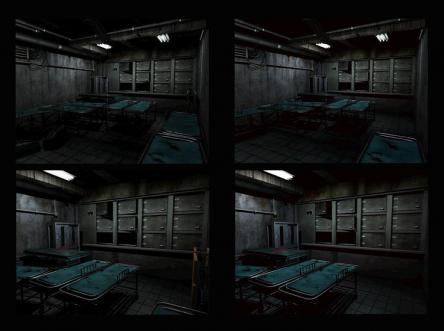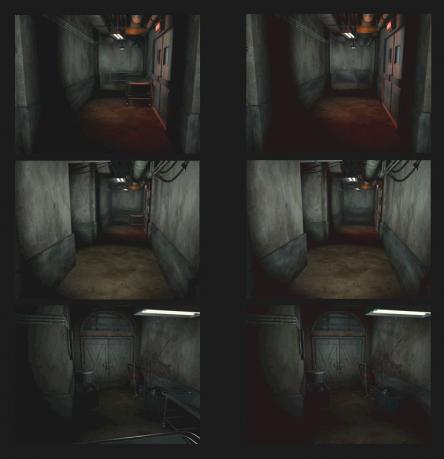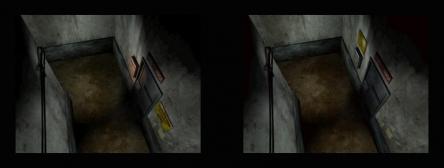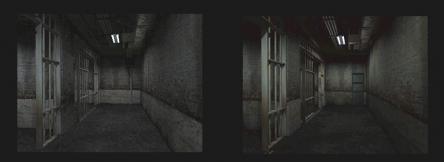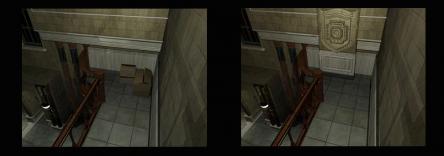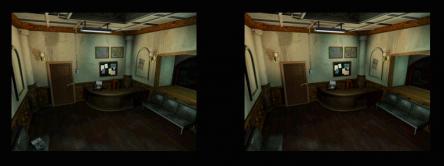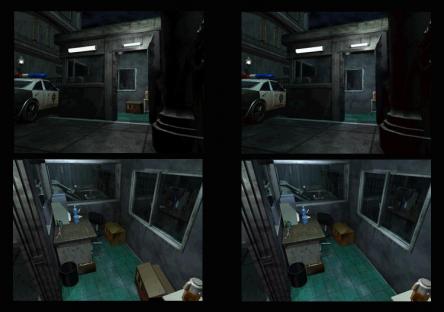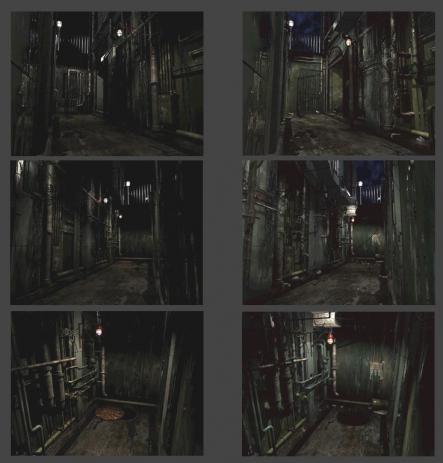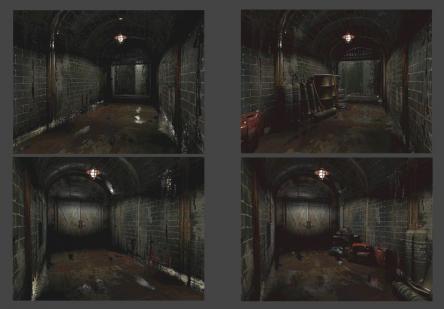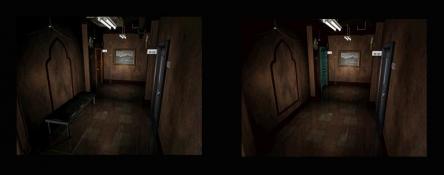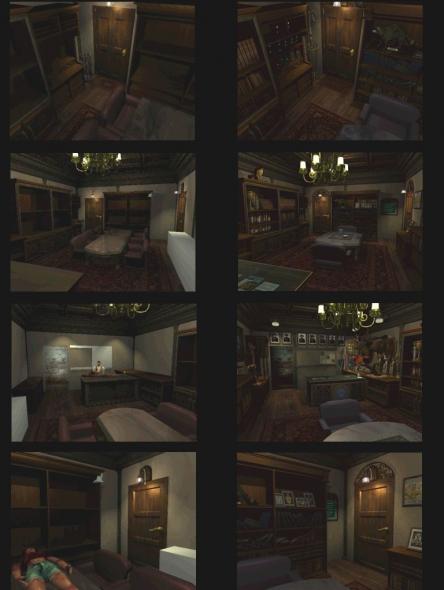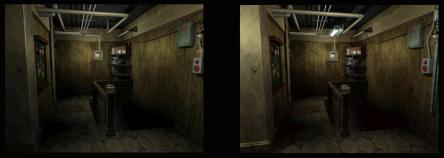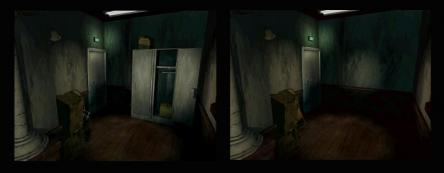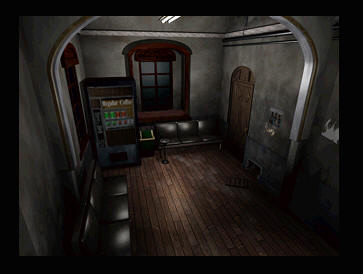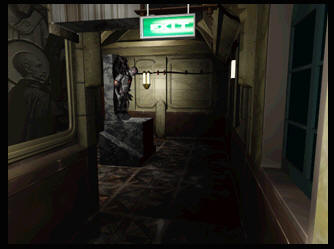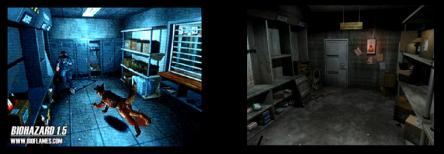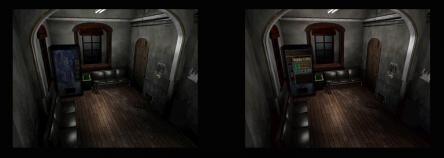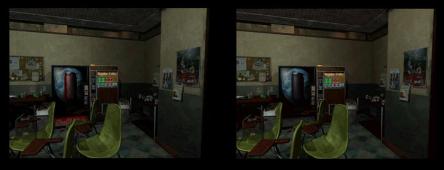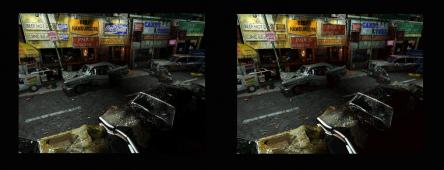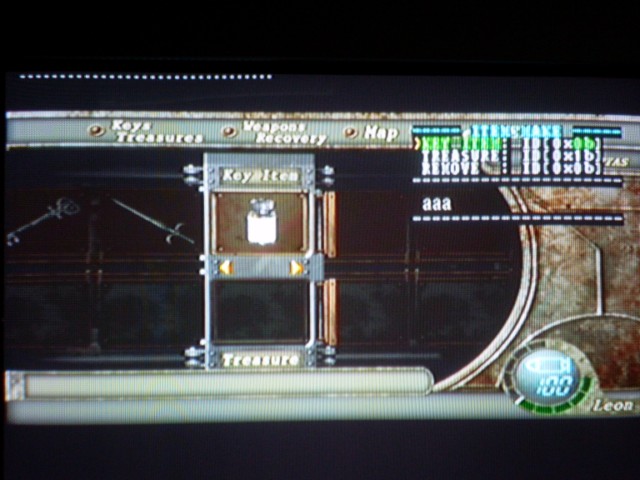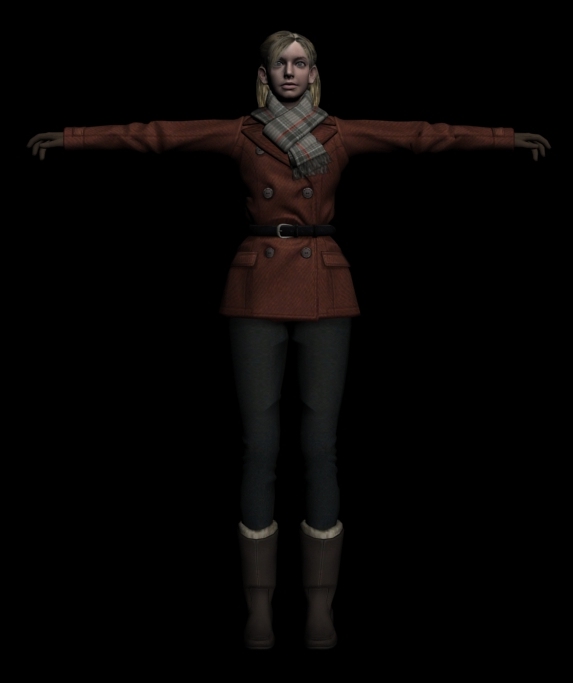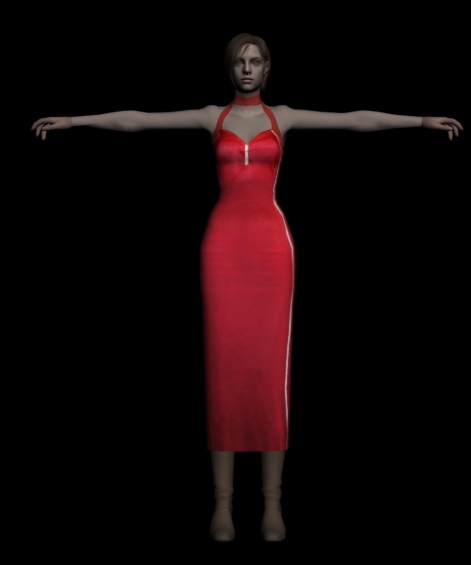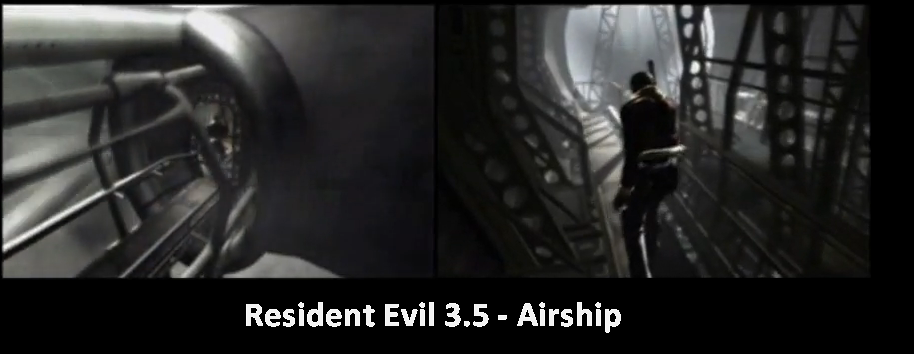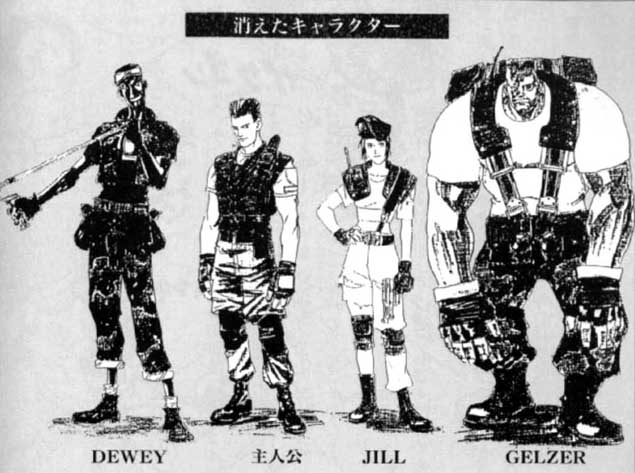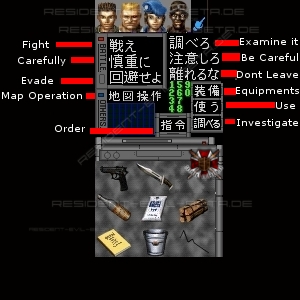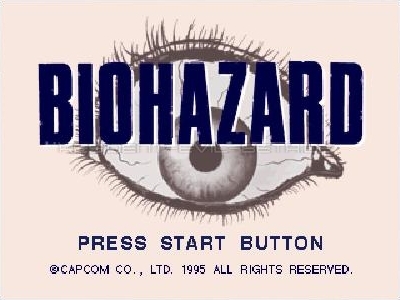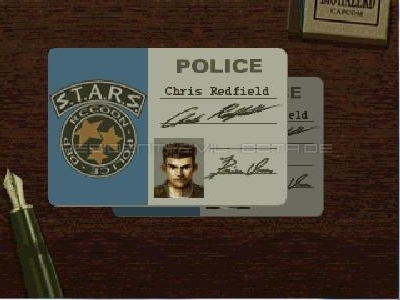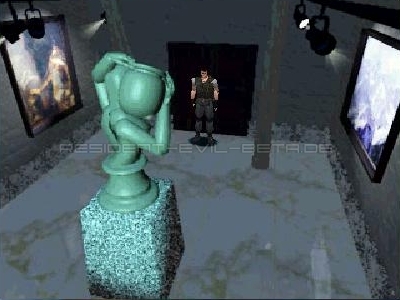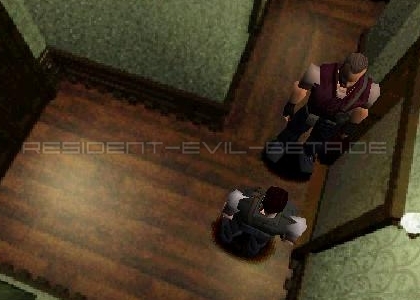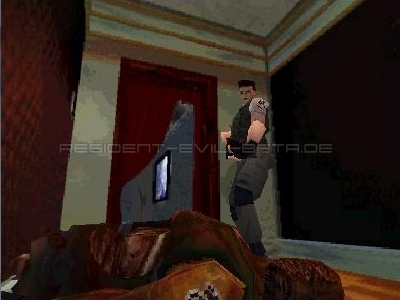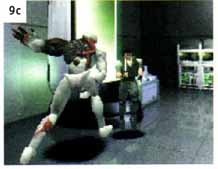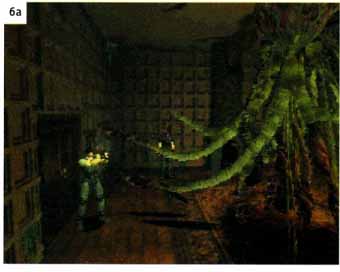
This article is intended to be the definitive comparison between the Trial edition extracted backgrounds which are dated from 1996 to 1997 and comprise of Resident Evil 1.5 and Early betas for Resident Evil 2. Most of these images are likely old to some of you, but are presented here in a coherent format to be compared. The reasoning behind this is to entertain and inform you and also to aid in weeding out faked beta images. So if you’ve seen someone saying they have Beta 1 and they show an image where the door frames are from the Final release or there’s a box that didn’t appear until way later, then you’ll know it’s a fake. This is the first incarnation of this article. The work consists of images provided by Sardeljka and Albert and text analysis by me (Leatherface74).
This article is far from complete and may have errors, as I am only human (for now…). If you find any errors or additions please post them. Also, I did not post any images that I saw as redundant, like different camera angles or untextured rooms. The reason I didn’t do this is because those are clearly beta images and for the most part do not contain any apparent structural changes to the game. This article will only detail rooms that have changed from the Trial until the Final release.
Special Thanks to Sardeljka, for finding the 1.5 images and to Albert, for supplying me with pristine RE2 backrounds to compare with the beta ones (which he also supplied). Images on the left are extracted from the trial edition, Images on the right are from the final game unless otherwise noted. Let’s Begin…
[Article written by Leatherface74 – Thanks for the contribute!]
Chapter 1: Door Door A-GO-GO
As the RE2 team began work yet again on the RPD it seems that the structure was not completely planned in advance, as there are doors in the Trial Edition backgrounds that do not appear in the Final and vice versa.
In the first floor Police office in the West wing, a door that appears in the Final is absent in the Trial Edition. The door, which led to the second floor Crow Hallway, has been replaced with what looks like a medicine cabinet.
Trial Edition (left) – Final Game (right)
The next missing door is quite possibly one of the most interesting Trial backround images. There is a door behind the statues in the Statue Pressure Plate Puzzle Hall that simply does not exist or has been referenced (at least to my knowledge) in any other screenshot. The Door is of course missing in the final game. In the same hall, a door that was in the Final (yet locked) is absent in the Trial Edition.
Trial Edition (left) – Final Game (right)
It is possible that the door in image 1 was intended to lead into the door Sherry crawls under in the Final, but Capcom realized that placing the door there made the layout of the hallway a structural impossibility since it would technically be going through the STARS office; Therefore, the door was moved to it’s correct location as is present in the final. Also note that the door does not have a hole at the bottom for Sherry to crawl through like it does in the Final, possibly meaning that it hadn’t yet been scripted at the time the backround from the Trail Edition was created.
Chapter 2: Altered States
The title of this chapter refers to differences between Trial Edition backgrounds and Final backgrounds. These differences do not include missing doors or missing items (unless otherwise stated), they only include architectural changes. This chapter will have sub-sections as there are many architectural changes between the backgrounds.
Streets
Upon exiting Kendo’s Gun store, one can see a building looming in the background. In the Trial Edition, the building continues unbroken and has no windows. In the final, the building ends mid-way and has a window. The color of the pipe has also changed from a rusty red to a green.
Trial Edition (left) – Final Game (right)
In the 2nd image, a building that looms in the background of the final is absent in the Trial Edition. A pipe has also been removed from the left wall in the final, but it is present in the Trial Edition.
Trial Edition (left) – Final Game (right)
Upon reaching the basketball court several differences are instantly apparent. In the Trial Edition, the graffiti in the court reads “Murder on the dance floor” but in the final it is replaced with “Above the Rim.” The dance floor graffiti was recycled and placed on the wall across from the the “Above the Rim” wall. Another difference is that the building above the court is missing a section in the Final that is present in the Trial Edition.
Trial Edition (left) – Final Game (right)
Ok, the following change is subtle, yet major. Under the fire escape past the basketball court, there is a red brick facade on the first floor wall in the Trial Edition. In a strange move, the wall was made completely into a flat gray wall in the final. On analysis, this seems like an error from a 3d modeler who shifted the Grey brick wall from the Trial Edition (where it sits just slightly behind the red brick wall) forward and just never put it back. This is supported by the fact that all the architectural details (window sills and such) are still present but the window outlines are not.
Trial Edition (left) – Final Game (right)
The most famous altered setting in the game is the alley leading to the RPD, since it is playable in the Playstation version of the game with a gameshark code. There’s not much to say about this drastic change other than the obvious fact that it reduces the time it takes to get to the RPD considerably. Likely, Capcom decided late in development to extend the path to the RPD as it was just too easy to get the RPD.
Trial Edition (left) – Final Game (right)
RPD 1st Floor
The room that was most drastically changed in the RPD is easily the Media Conference Room. The Layout and size remain almost identical, but the decor is completely different for both rooms. Also, note the absence of any puzzle elements in the Trial Edition backgrounds.
Trial Edition (left) – Final Game (right)
The window shutter hallways also went through considerable changes. In the Trial Edition, the shutter hall with the Licker has normal windows with no shutter equipment attached. In the other shutter hall, the windows have been boarded up.
Trial Edition (left) – Final Game (right)
RPD 2nd Floor
The hall with the door Sherry crawls into in the Final has been altered from the Trial Edition. In the Trial Edition, the wall on the left contains an electrical panel of some sort and the door does not have the hole for Sherry to crawl through like in the Final. In the Final, the electrical panel has been placed on the opposite wall and the left wall contains lockers.
Trial Edition (left) – Final Game (right)
RPD Lobby
Ah yes, we all remember the first time we first set foot in the RPD Lobby and were amazed by it’s sheer scale and grandeur. Minor changes are strewn about in this area, mainly in regards to doorways. In the Trial Edition, the doorways are simple and their frames are small, but in the Final some of the doors have been made bigger and their frames more elaborate. This was likely because the old doors and frames were were too boring and simplistic. One other notable change is that the fire escape is missing from the Trial Edition, likely because it had not been thought of at this point.
Trial Edition (left) – Final Game (right)
Helicopter Hallway
The Helicopter Hallway leading to Cheif Irons’ office had alot more damage in the Trial Edition than in the Final. The Trial Edition damage seems more realistic (the hallway was not only hit by a helicopter, it was blown up as well), but it was likely lessened after realizing that it made the hallway too tight and cluttered. Also note that the color of the hallway in the Trial is very cartoony and resembles the style of RE1. The Door to Irons’ office is also different.
Trial Edition (left) – Final Game (right)
RPD Basement
As a far as I can tell, there are only three architectural differences from the Trial Edition and Final Basement:
In the hall leading to the Jail Cell and Kennel, the door through which you enter is different and there is what looks to be an air conditioning shaft on the right wall added to the Final. There is also an electrical panel across one of the jail cells in the Trial Edition. It is missing in the Final.
Trial Edition (left) – Final Game (right)
In the electrical room, the switch puzzle has been altered.
Trial Edition (left) – Final Game (right)
Door to the Evidence Room
At first the door to the Evidence room was electronically locked, as shown in the two images on the left (the first is missing the keycard reader). In the Final, it is a regular door.
Trial Edition (left) – Final Game (right)
Police Office
Ok, this one is really subtle, but it is a definate change. The blood spatter next the doorway is different in the Trial version than in the Final. It also seems like another layer of grime was added to the walls.
Trial Edition (left) – Final Game (right)
Weapons Storage
The Lockers in the Trial version look new while the ones in the Final are wrecked.
Trial Edition (left) – Final Game (right)
Chapter 3: There is a Thief amongst us! (missing items)
As RE2 evolved into it’s final form, many items were either moved, replaced by other items, or were simply removed from the game. This list catalogs those items.
The Morgue
One of the coolest missing details in the game are the body bags. They appear in the morgue in the Trial Edition, then in a later beta they appear again only empty, but in the Final game they are just gone. It’s a shame as they looked pretty cool. There is also a stretcher and a yellow piece of equipment (top right corner of morgue) missing in the Final that did appear in the Trial Edition. There are some details that were added to the Final that did not appear in the Trial Edition, including some gas canisters, a table, and some missing pipes on the wall.
Trial Edition (left) – Final Game (right)
Basement Hallway
Originally, the basement hallway was littered with stretchers. As with other changes, they were likely done to reduce the onscreen clutter.
Trial Edition (left) – Final Game (right)
Also, the yellow sign for the Weapons storage has been moved.
Trial Edition (left) – Final Game (right)
Jail Cell Hallway
A shelf has replaced the pipes from the Trial in the Final game.
Trial Edition (left) – Final Game (right)
Lobby
There are a pile of Boxes in the Trial on the top east corner of the second floor balcony. They are Replaced by a puzzle in the Final.
Trial Edition (left) – Final Game (right)
West wing Reception office
A book is present on the couch in the Trial and not in the Final.
Trial Edition (left) – Final Game (right)
Police Parking Lot
A box is in the security office in the Trial but not in the final.
Trial Edition (left) – Final Game (right)
Basement Exterior leading to Sewers
There is detailing missing in the Trail that is present in the Final.
Trial Edition (left) – Final Game (right)
1st Floor West wing hall leading to the Media Conference Room
A bench from the Trial is absent in the Final. Also note that the door to the Media Conference room has changed due to the room being redesigned.
Trial Edition (left) – Final Game (right)
Cheif Iron’s Office
The office remain almost identical, the only difference being that many items are missing or unfinished and the couches have been moved and replaced in the Final game.
Trial Edition (left) – Final Game (right)
West Wing Shutter Hall
A flourescent light fixture is missing in the Trial.
Trial Edition (left) – Final Game (right)
2nd Floor Crow Hall
A locker is present in the Trial Edition but not in the Final.
Trial Edition (left) – Final Game (right)
Chapter 4: Random Musings
This chapter covers anything which did not fit in any other category or just anything in particular.
Notice the use of RE 1.5’s Lobby couches in this Image.
This image was amongst the extracted images. It is likely from a really early beta created before they had the actual statue model ready, since this one is clearly the statue from the Art Storage Room.
The Weapons room has the same dimensions (as does most of the RPD basement) of its RE 1.5 counterpart. Note the recycled shelf models on both sides.
Ah yes, we all remember the infamous Coca Cola look-a-like signs that appeared in both the beta and early release versions of the game. For those who don’t know, Coke threatened to sue Capcom, so all the references were removed in later releases of the game.
Copyright Infringement! Woohoo!
That’s pretty much all I have for now, more will be added or fixed as it is needed. I hope you enjoyed my massive waste of space and time!
[Article written by Leatherface74 – Thanks for the contribute!]
If you have some questions, comments, more infos or theories about this article, you are welcome to join us in the Unseen 64 Forum!

